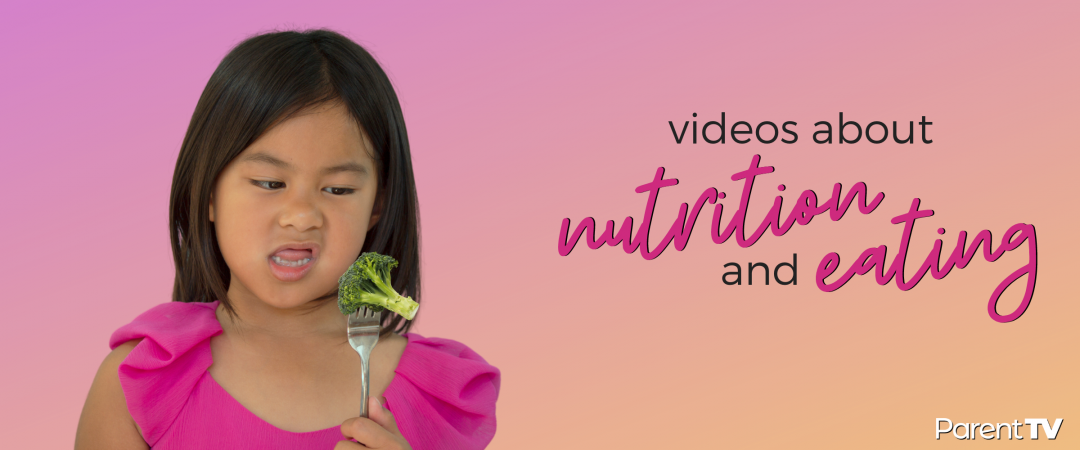Picky Eaters: Expanding Your Child's Food Preferences
Categories: Nutrition
Are you the exhausted parent of a child who insists on dinosaur pasta for every meal? Has the child who was like a human compost bin when they were a toddler become unbearably picky as they get older? Do you buy beautiful seasonal produce for creative lunchbox snacks only to have your kids turn their noses up at them in favour of anything that is processed, packaged and nutritionally void?
Congratulations, you’re the parent of a …Child!
That’s right. Not a ‘fussy’ child, just a child. While it’s undoubtedly true that some kids are much less flexible than others, a LOT of kids go through periods where they are selective about what they eat and how they eat it. It’s a bit annoying. ‘Fussy is a subjective term anyway,’ says ParentTV expert and accredited dietitian, Deb Blakley. ‘What one mum thinks is outrageously picky behaviour, another mum will ignore. Being picky with food, eating food one day and rejecting it the next and having an appetite that’s as changeable as the wind are all hallmarks of how normal children eat.’
But, what if they’re refusing more and more foods and you’re locked in a constant battle of wills at mealtimes? ‘What we need to do as parents is to find a nice balance between structure and autonomy with eating,’ says Deb. ‘This means we need to stay in control of what, when and where children eat, and let them be in charge of how much and whether they eat.’ The important thing is to not just label your child as fussy and give up on them, Deb says. ‘Parents of fussy kids often give up on foods way too early. They actually need to keep presenting that food over and over again.’
It can be tricky to identify why your child isn’t eating a certain food, what they don’t like about it or if ‘not liking’ it is even the issue. There might be sensory aversions at play, a need for power or agency, fears about new and unfamiliar tastes, textures and smells or a multitude of other things. Whatever the reason for their choices, there are always strategies you can employ to help them change their attitude towards food and expand the scope of their eating. Remember, brains are plastic and new pathways can be formed about foods and eating, it just takes time!
Here’s some things to try:
Offer foods prepared in different ways
‘For your child, a grated carrot is a totally different food to a carrot that’s cut into sticks,’ Deb says. Sometimes, changing the way you serve a food can make your child curious or interested in it again, or just prompt them to reevaluate their initial opinion. Get creative with peeling thin slivers off the food for them to try, cutting it in different shapes, cooking it in different ways and combining it with different things.
Work with what you’ve got
Baby steps are still steps! If your child will only eat white rice, try white rice with a small amount of something else served on top or to the side, or white rice made into arancini balls. If they’ll only eat chicken nuggets, try offering a homemade tomato sauce to dip them in. Don’t ‘trick’ them, just make small adjustments and if they accept them, build from there. You can also try offering two safe, familiar foods that you know they like with one new food. This takes the pressure off the experience and the focus off the new item, making it easier to try it.
Change your language
Positive language around food can really help shift your child’s perceptions, says Deb. If you’re hearing a lot of ‘that broccoli is yucky’ or ‘I hate broccoli,’ try reframing it as ‘you’re still learning to like broccoli.’ This communicates to kids that they’re on a journey with foods and eating and they don’t have to make decisions about what they do or don’t like straight away. You can also tell them if there’s a food that you’re still ‘learning to like’ as an adult, to show them that you’re open to changing your mind, too.
Let them play with their food
This might go against everything you were taught as a child, but letting your kiddo play with their food can be a big part of breaking down their opposition to certain things. Sometimes, even touching a new or different food is a pathway to eventually trying it, so encourage them to poke and prod things and play a game of mini golf with peas and carrot sticks if that’s what they want to do. You can even let them play with food when it’s not an eating time so they feel less stressed about the expectations around it. Make slime, potions, goo or wombat stew – just make it fun!
Expose them to variety and get them involved
Exposing kids to a wide variety of foods is an important part of expanding their eating repertoire. Let them get involved with shopping for the whole family, including for foods that they might not eat, just so they’re aware that other people enjoy different things. Get them involved with selecting food, then cleaning and preparing it at home. Discuss lunchbox ideas, and let them contribute suggestions. All of this familiarises them with different foods and can help make them more comfortable with the choices that are out there.
Whatever you do, you’ll need patience, and lots of it. But, persistence pays! Let us know how you go, and check out these videos to learn more about food and eating issues in kids.

